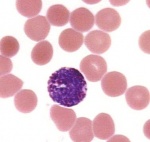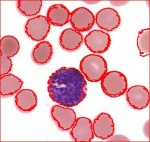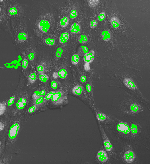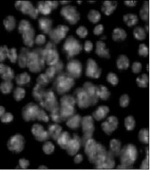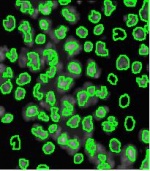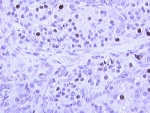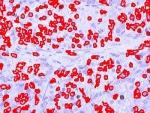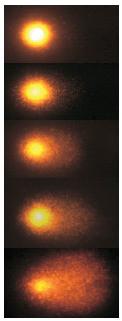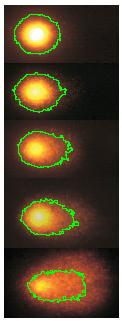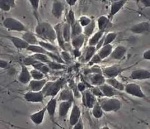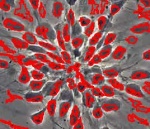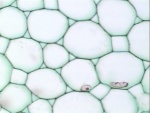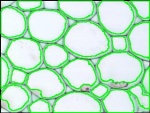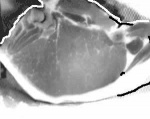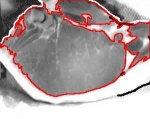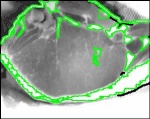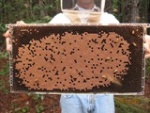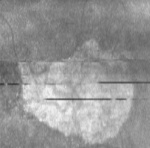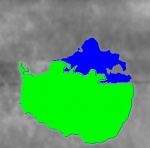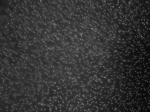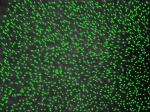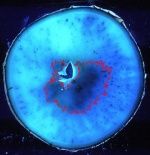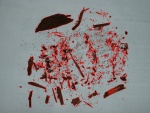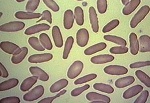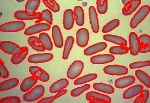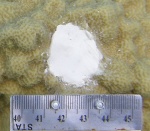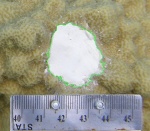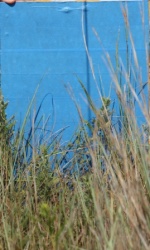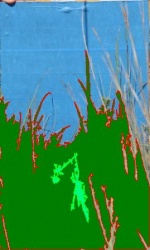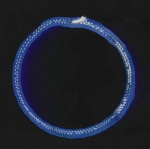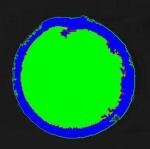This site is devoted to mathematics and its applications. Created and run by Peter Saveliev.
Examples of image analysis
From Intelligent Perception
Below is a list of examples of how Pixcavator has been used to analyze images in an enormous variety of fields.
Note that almost none of the analysis examples require prior image enhancement. While looking at the analyzed images, observe that the analysis settings are appended to the name of the original image (for example, cells_100_20.bmp is the image that displays the results of the analysis of cells.bmp with the settings: size = 100, contrast = 20). This way you can easily reproduce the results on your own. There are also screenshots that show the settings. For more see Pixcavator help.
Please feel free to use Pixcavator's screenshots in presentations, publications, reports, etc. Many users have done this previously and we appreciate that they give us the credit. For the legal details see Pixcavator's user's license and Terms and conditions.
See also this point-by-point comparison of Pixcavator and ImageJ.
1 Is Pixcavator for you?
There are several ways to approach this question.
First, you can determine if your images may be good candidates for analysis with Pixcavator by reading Images appropriate for analysis.
Second, you can consider these (overlapping) categories of examples classified according to the image analysis tasks:
Third, see these categories of examples classified according to the field of application:
You can also browse the complete list of examples in the next section or scan the images on the right (if you find one of them interesting, click on the image and then go to the bottom of the page to "The following pages link to this file").
Consider also:

2 Complete list of examples
Favorites are in bold.
- Analysis of sample images (synthetic images and standard images)
- Flow-through pore diameters (paper)
- Control of electron transport (paper)
- Inspecting semiconductor wafers (machine vision)
- Cell counting (measuring etc)
- Measuring staining in the liver
- Cell metal segregation and ultramicroscopy
- Blood vessels (not very successful)
- Evaluating ratio meat/fat
- Evaluating ratio meat/fat 2
- Character recognition (aka OCR)
- Image analysis for a hand-held diagnostic device (arrays)
- Mosaic making (fun)
- Optical illusions (fun)
- Microarray analysis (HTC)
- Drusen contours (ophthalmology)
- Counting sealed brood in bee frames
- Measuring the volume of prostate cancer tumor (slice by slice)
- Measuring holes in a gasket (calibration)
- Ophthalmology diagnosis
- Detecting a small breast cancer tumor
- MRI (under construction)
- Solar flares (astronomy)
- Cellular structures (cell counting)
- Iceberg is born (satellite imaging)
- Metallurgical image analysis
- Crystallites (counting particles)
- Measurement statistics of fibers
- Thermal imaging (night vision)
- Wall of a blood vessel (measuring thickness)
- Medical testing device
- Fluorescent images for tumor demarcation
- Measuring chromosomes (not quite successful)
- Measuring electronic components
- Testing vaccine spray/aerosol droplets
- High throughput screening (paper)
- Counting fixed and live red blood cells
- Melanoma (ABCD analysis)
- Counting and measuring lots (real estate)
- Corneas of rats (paper)
- Evaluation of quality of seeds (paper)
- Micropallet arrays
- Nanotechnology (counting particles)
- Corneal endothelial cells of the human eye (hexagonal cells)
- Particle cleaning process
- Measuring a needle
- Measuring micromechanical parameters of fiberglass
- Counting cones in a mouse's retina
- Measuring length of fish in petri dish
- Transversal section of a root (measuring)
- Circumference of a coral lesion
- Counting chocolates in a box
- Defective spring
- Microscopy of surfactants
- Membranes containing proteins
- Particle statistics with calibration
- Satellite image of Sicily
- Counting stained DNA
- Immunohistochemistry on lung biopsies
- Cluster size effects in molecular beam scattering (paper)
- Measure vegetation coverage
- Hose measurements
- Measuring seedling area
- Bubble sheets
- Quality of soldering
- Phase transition of petroleum
- Mobility and distribution of chlorophyll proteins
- The behaviour of double oxide film defects in liquid Al alloys
- Sub-pixel accuracy for distance measurement
- Analysis of SEM images of alloy
- Breast carcinoma detection
- Immunohistochemical detection in a study of hypertension
- Antimicrobial study of a medicinal plant
- Fish counting
- Colorant dispersion
- Seurat's painting
- Fungi kill spiders
- Properties of stones for railway foundation
- Geometry of corneocytes imaged with fluorescent microscopy
- Anticancer property of gallic acid
- Bioelectrical signals control stem cell progeny

Digital discoveries
- Casinos Not On Gamstop
- Non Gamstop Casinos
- Casino Not On Gamstop
- Casino Not On Gamstop
- Non Gamstop Casinos UK
- Casino Sites Not On Gamstop
- Siti Non Aams
- Casino Online Non Aams
- Non Gamstop Casinos UK
- UK Casino Not On Gamstop
- Non Gamstop Casino UK
- UK Casinos Not On Gamstop
- UK Casino Not On Gamstop
- Non Gamstop Casino UK
- Non Gamstop Casinos
- Non Gamstop Casino Sites UK
- Best Non Gamstop Casinos
- Casino Sites Not On Gamstop
- Casino En Ligne Fiable
- UK Online Casinos Not On Gamstop
- Online Betting Sites UK
- Meilleur Site Casino En Ligne
- Migliori Casino Non Aams
- Best Non Gamstop Casino
- Crypto Casinos
- Casino En Ligne Belgique Liste
- Meilleur Site Casino En Ligne Belgique
- Bookmaker Non Aams
- онлайн казино с хорошей отдачей
- スマホ カジノ 稼ぐ
- Trang Web Cá độ Bóng đá Của Việt Nam
